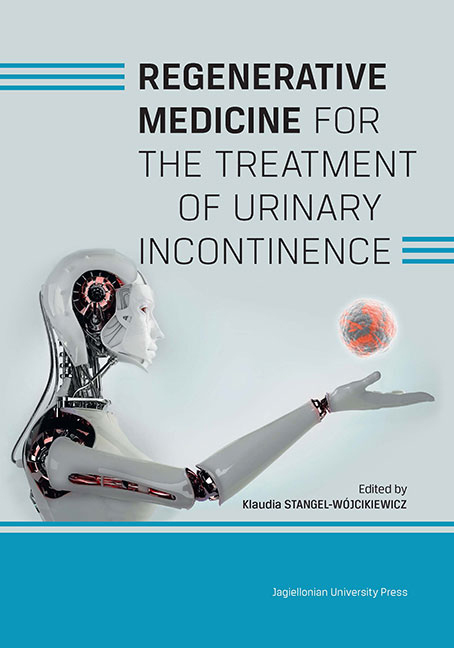Book contents
- Frontmatter
- Contents
- Preface
- Introduction
- Chapter 1 Urinary incontinence in women - outline of the problem
- Chapter 2 Anatomy of the urogenital system
- Chapter 3 Clinical types of urinary incontinence
- Chapter 4 Treatment of stress urinary incontinence
- Chapter 5 Regenerative medicine for the treatment of urinary incontinence
- Chapter 6 Virtual Patient system - simulations of clinical encounters for medical education. Case study of a woman with urinary incontinence
- Chapter 7 Development of a robotic tool aiding a new stem cell-based treatment for stress urinary incontinence in women
- Chapter 8 Difficulties and limitations of cell-based therapy for the treatment of urinary incontinence
- Summary
- List of authors
Chapter 1 - Urinary incontinence in women - outline of the problem
Published online by Cambridge University Press: 03 January 2018
- Frontmatter
- Contents
- Preface
- Introduction
- Chapter 1 Urinary incontinence in women - outline of the problem
- Chapter 2 Anatomy of the urogenital system
- Chapter 3 Clinical types of urinary incontinence
- Chapter 4 Treatment of stress urinary incontinence
- Chapter 5 Regenerative medicine for the treatment of urinary incontinence
- Chapter 6 Virtual Patient system - simulations of clinical encounters for medical education. Case study of a woman with urinary incontinence
- Chapter 7 Development of a robotic tool aiding a new stem cell-based treatment for stress urinary incontinence in women
- Chapter 8 Difficulties and limitations of cell-based therapy for the treatment of urinary incontinence
- Summary
- List of authors
Summary
Definition of UI
In 2002 the International Continence Society (ICS) revised the definition of urinary incontinence and termed it as the complaint of any involuntary loss of urine. Stress urinary incontinence (SUI) was defined as the complaint of involuntary leakage on effort or exertion, or on sneezing or coughing; in such a situation the intravesical pressure is higher than the maximum urethral closure pressure.
Epidemiology
Urinary incontinence affects over 200 million women in the world. Because this complaint has a specific nature and is often embarrassing to patients, the global scale of the problem is difficult to estimate precisely. Symptoms of urinary incontinence may be very troublesome and cause a multitude of physical and psychological consequences. Depending on the study, the prevalence of UI in women is between 25 and 51%, when all episodes of urine leakage are reported per year, or 10% for weekly urine leakage [1–3]. Many studies indicate the increasing prevalence of urine leakage with age. According to Nygaard et al., this symptom was reported by about 7% of women between ages 20 and 39 years, about 17% of women between ages 40 and 59 years, and about 32% of women aged 80 or older. The type of UI also changes with age. Stress urinary incontinence is most common in women aged 30–40 years, then the prevalence decreases, to reach the lowest level at about 80 years. Older women are usually diagnosed with mixed or urgency UI [4].
Risk factors for SUI
SUI is an ailment that has many predisposing factors, both environmental and genetic.
Environmental risk factors for SUI
Environmental risk factors for SUI include: age, sex hormone levels,
number of pregnancies, number of vaginal deliveries, body weight, metabolic diseases, history of surgical interventions within the lesser pelvis, and others (e.g. used medication and tobacco smoking).
Age and sex hormone levels
As shown in an American study of 1529 women, the incidence of UI in women in early peri-menopause is 1.34 times higher compared to those being in pre-menopause, while women being in menopause report this health problem twice as often. The reported data refer only to UI in general [5, 6].
- Type
- Chapter
- Information
- Publisher: Jagiellonian University PressPrint publication year: 2016

